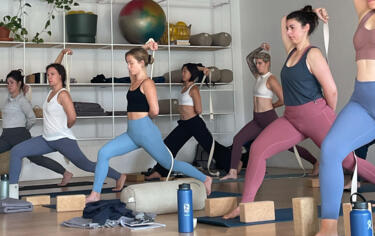
Yoga Sequencing Tips for New Yoga Teachers - From Flow to Feeling
Stepping into the role of a yoga teacher is an exciting and sometimes slightly nerve-wracking experience. Suddenly, you’re not just practicing yoga, you’re guiding others through it. One of the most powerful tools you’ll develop on this journey is the ability to craft meaningful, intentional sequences.
Sequencing is more than just stringing poses together. It’s about creating an experience - a journey that touches not only the body, but also the breath, the mind, and maybe even the heart.
Here are some of our favorite yoga sequencing tips to help you feel confident, creative, and connected as you step into teaching.
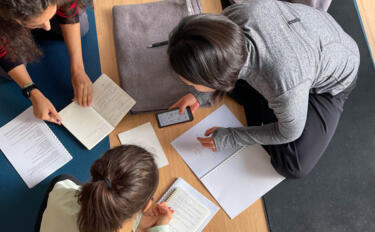
Start with a Theme or Focus
Great sequences usually begin with a clear intention.
This could be:
A peak pose you’re building toward
An anatomical focus (like hips, shoulders, spine)
A quality or feeling, like grounding, expansion, or presence
A philosophical theme, like Ahimsa (Non-Violence) or Svadhyaya (Self-study)
Or an energetic layer, like working with the chakras or breath patterns
Choosing a theme gives your class structure and depth. It helps your students (and you!) stay connected to something bigger than the poses. Start with something that lights you up - the rest will unfold from there.
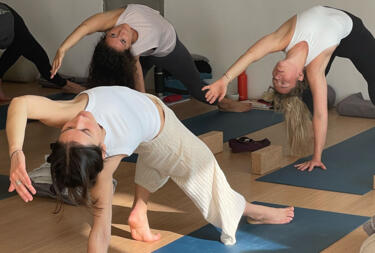
Choose Your Poses With Purpose
Think of your poses like ingredients in a recipe - each one should serve a purpose.
Ask yourself:
What are my students going to feel or learn through this pose?
Does this pose support the theme?
How does it prepare or balance the ones that come before and after?
Sequencing is a skill, and it’s also a language. Each pose is part of the story - and how you place them creates the rhythm, mood, and impact of your class.
Begin with Centering and a Gentle Warm-Up
Give your students space to arrive.
Start with breath awareness, a short meditation, or even a moment of silence. Then, gently warm up the body - think spinal movements, joint mobilization, or breath-connected stretches.
These early moments set the tone. They invite students to shift out of their day and into themselves.
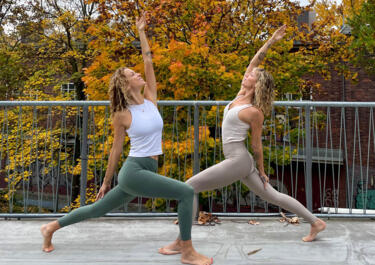
Build with Intention
From your warm-up, gradually move toward more challenging postures. This steady build-up helps:
Prevent injuries
Support the nervous system
Make stronger poses feel more accessible
Imagine your class like a wave - it rises, crests, and gently settles. That wave-like structure helps students feel supported and safe throughout.
Balance & Counterbalance
Aim for a sense of balance in your sequence - between sides, strength and softness, effort and rest.
If you twist to one side, make space for the other. After strong backbends, offer neutralizing poses rather than deep forward folds. The goal is to leave your students feeling integrated and grounded.
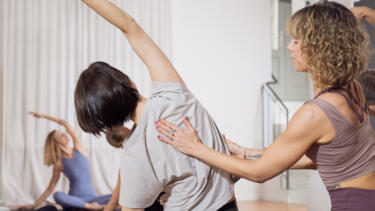
Breathe with It
Let the breath lead the movement.
As you sequence, consider where inhales and exhales naturally fall. Teach your students to move with the breath, not in spite of it. This simple awareness brings your sequence to life and deepens the mind-body connection.
Also - don’t be afraid to pause. Stillness is just as powerful as movement.
Offer Variations and Modifications
Not every student will meet every pose the same way - and that’s not the goal.
Create space for choice. Offer variations and props. Remind your students that their practice is their own. The best teachers know how to teach to the room - even when the room is full of different needs and bodies.
Bonus tip: Be willing to adapt your plan. Your sequence should serve your students, not the other way around.
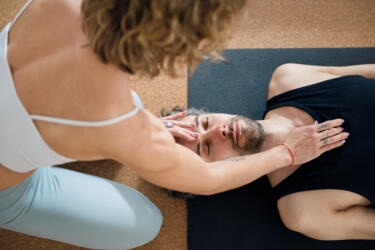
Leave Space for Rest
Include small rests between challenging segments. And never skip Savasana.
That final resting pose is where the nervous system resets. It’s where the practice settles in. It’s often where the real magic happens.
Practice Your Sequence First
Before you teach it, feel it in your own body. Notice:
Does the flow make sense physically?
Are the transitions smooth?
Is there too much repetition on one side?
Once you've moved through it yourself, take a few quiet minutes to visualize it. Mentally walk through the class - from breath to movement to theme - so when you teach, you feel grounded and clear.
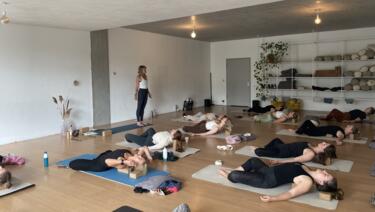
Final Thoughts: Sequencing Is an Art, Not a Formula
As a new yoga teacher, it’s easy to get caught up in “doing it right.” But sequencing isn’t about getting it perfect - it’s about creating a safe, meaningful space for others to explore.
With time and practice, your sequences will evolve. They’ll become more intuitive, more creative, and more deeply connected to your voice as a teacher.
Keep listening. Keep learning. And most importantly - keep teaching from your heart.
